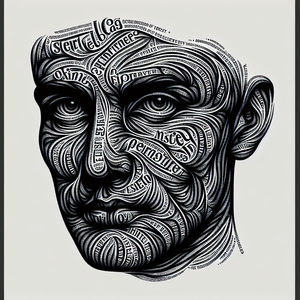The Rise of the AI-Enhanced Aerospace Engineer

AI's influence on aerospace engineering is profound, touching every aspect of the industry. It is revolutionizing processes, improving efficiency, and opening up new frontiers of innovation. One of the most impactful changes is the adoption of AI-assisted design. Traditional design methods, which often required months of painstaking calculations and prototyping, are being replaced by AI algorithms capable of simulating and optimizing thousands of design variations in a fraction of the time. These algorithms can factor in variables such as aerodynamics, weight distribution, and fuel efficiency, enabling engineers to create advanced, sustainable aircraft. For example, industry giants like Boeing and Airbus are already relying on AI to test innovative materials and aerodynamic configurations for next-generation aircraft. AI-driven simulation tools allow engineers to predict how new materials will perform under stress, drastically reducing the time and cost of building physical prototypes. Similarly, space exploration has benefited immensely from AI. NASA and private space companies like SpaceX use AI to design spacecraft that can endure extreme conditions, such as intense radiation in deep space or the high-velocity impacts of micrometeoroids. AI is also transforming testing and maintenance. Predictive maintenance systems, powered by machine learning algorithms, analyze data from sensors embedded in aircraft to identify and predict potential component failures. This proactive approach not only enhances safety but also minimizes downtime and reduces maintenance costs. In addition, AI is enabling the development of autonomous systems for drones and spacecraft, allowing them to make real-time decisions in unpredictable environments, such as navigating through a storm or landing on an alien surface.
The Evolving Role of Engineers
The rise of AI is fundamentally altering the role of aerospace engineers. Tasks that once required hours of manual calculations or repetitive analysis are now being handled by AI systems, freeing up engineers to focus on higher-level problem-solving and innovation. But this shift comes with new responsibilities. Aerospace engineers are no longer just creators of machines—they are collaborators with intelligent systems. In this new paradigm, engineers must act as strategists and decision-makers who interpret AI outputs and ensure they align with mission objectives. For instance, when designing a Mars rover, AI can analyze terrain data and recommend optimal landing zones. However, engineers must evaluate these recommendations in the context of the mission's scientific goals, balancing technical feasibility with the broader objectives of exploration. This blending of technical expertise and human judgment highlights the evolving role of the engineer as a critical link between AI-driven insights and practical implementation. To thrive in this AI-driven environment, aerospace engineers must expand their skill sets. Proficiency in traditional engineering principles is no longer sufficient. Engineers must now be adept at programming languages like Python, understand the mechanics of neural networks, and be capable of debugging AI systems. They need to think like data scientists, interpreting patterns and identifying anomalies in data generated by AI tools. In short, the aerospace engineer of 2025 is not only a builder but also an innovator who can harness the power of AI to achieve groundbreaking results.
Ethical and Technical Implications
Despite its transformative potential, the integration of AI into aerospace engineering raises significant ethical and technical challenges. One of the most pressing issues is accountability. In a high-stakes industry where errors can have catastrophic consequences, determining responsibility is critical. If an AI system recommends a flawed design or fails to predict a mechanical issue, who is held accountable—the engineer who oversaw the system, the organization that deployed it, or the developers of the AI itself? Clear guidelines and accountability frameworks must be established to maintain safety and public trust. Another concern is the potential for job displacement. As AI takes over routine tasks, there is a fear that traditional engineering roles could be rendered obsolete. However, rather than eliminating jobs, AI is more likely to transform them. Roles will evolve, with a greater emphasis on skills like AI management, data analysis, and ethical decision-making. This shift underscores the importance of continuous learning and adaptability for engineers. Trust is another critical issue. For AI systems to make life-or-death decisions—such as autonomously navigating an aircraft through a storm or controlling the trajectory of a spacecraft—engineers and the public must have confidence in their reliability. To build this trust, aerospace companies must prioritize transparency. AI systems should undergo rigorous testing, and their decision-making processes must be well-documented and explainable. Only by addressing these ethical and technical challenges can the industry fully embrace AI while ensuring safety and accountability.
A Vision for the Future
The rise of the AI-enhanced aerospace engineer heralds a new era of possibilities. Imagine a future where engineers and AI collaborate to design carbon-neutral aircraft that revolutionize commercial aviation or autonomous spacecraft capable of exploring the farthest reaches of our solar system. These advancements have the potential to accelerate progress in both aviation and space exploration, bringing humanity closer to achieving dreams that once seemed impossible. However, realizing this vision will require significant changes in education and workforce development. Universities must adapt their curricula to include AI, machine learning, and data analytics. Training programs should focus on equipping engineers with the skills needed to work alongside AI systems. Meanwhile, aerospace companies must invest in upskilling their employees and fostering a culture of innovation. Collaboration between academia, industry, and government will be essential to prepare engineers for this AI-driven future. By working together, these stakeholders can ensure that the next generation of aerospace engineers is ready to navigate the opportunities and challenges of this transformative era.
The integration of AI into aerospace engineering represents a pivotal moment for the industry. By automating complex tasks, AI is enabling engineers to focus on innovation, creativity, and strategic decision-making. This shift is leading to groundbreaking advancements in aviation and space exploration, from more efficient aircraft to autonomous spacecraft capable of venturing into uncharted territories. Yet, this transformation also comes with challenges, from ethical dilemmas to the need for new skills. The aerospace engineer of 2025 will not merely build machines but will work in concert with intelligent systems, pushing the boundaries of what technology can achieve. By embracing AI while addressing its risks and complexities, the industry can unlock a future that is more efficient, sustainable, and ambitious than ever before. For aerospace engineers who are ready to adapt and innovate, the sky is no longer the limit—it is just the beginning.
AI-Driven Aerospace Design Engineer
Boeing, Airbus, NASA, Lockheed Martin
Core Responsibilities
Develop next-generation aircraft and spacecraft designs using AI-powered simulation tools to optimize aerodynamics, materials, and fuel efficiency.
Collaborate with AI specialists to train algorithms for rapid prototyping and design iteration.
Validate AI-generated designs by integrating engineering principles and conducting physical testing.
Required Skills
Proficiency in computational design tools like CATIA or Siemens NX, with experience in AI-driven CAD systems.
Strong understanding of aerodynamics, structural mechanics, and materials science.
Familiarity with AI tools like TensorFlow or PyTorch.
Predictive Maintenance Systems Engineer
GE Aviation, Pratt & Whitney, Rolls-Royce, Delta TechOps
Core Responsibilities
Design and implement predictive maintenance frameworks using sensor data and machine learning algorithms to enhance the reliability of aircraft systems.
Analyze real-time data to predict component failures and optimize maintenance schedules.
Collaborate with software engineers and data scientists to refine predictive models.
Required Skills
Expertise in sensor technologies, signal processing, and failure analysis.
Experience with machine learning platforms like MATLAB, Python, or AWS SageMaker.
Knowledge of aviation safety regulations (e.g., FAA, EASA).
Autonomous Systems Engineer (Aerospace)
SpaceX, Blue Origin, General Atomics, Northrop Grumman
Core Responsibilities
Develop AI algorithms for autonomous navigation and decision-making in drones and spacecraft.
Test and integrate autonomous systems that can adapt to unpredictable environments, such as planetary terrains or adverse weather.
Ensure compliance with safety and reliability standards for autonomous aerospace systems.
Required Skills
Proficiency in robotics software frameworks like ROS (Robot Operating System).
Background in control systems, sensor fusion, and reinforcement learning.
Experience in hardware-in-the-loop (HIL) testing environments.
Aerospace Data Scientist
NASA, Raytheon, Collins Aerospace, airline companies (e.g., United, Delta)
Core Responsibilities
Analyze flight and operational data to improve aircraft efficiency, safety, and performance using advanced data analytics and machine learning techniques.
Work with cross-disciplinary teams to develop predictive models for fuel optimization, route planning, and risk assessment.
Create dashboards and visualizations to communicate AI-driven insights to aerospace engineers and executives.
Required Skills
Advanced knowledge of data visualization tools (e.g., Tableau, Power BI) and programming languages like Python or R.
Familiarity with aviation datasets, such as flight telemetry or maintenance records.
Strong understanding of statistical modeling, anomaly detection, and big data platforms (e.g., Hadoop, Spark).
Ethical AI Specialist for Aerospace Applications
Airbus, FAA, DARPA, private aerospace startups
Core Responsibilities
Develop frameworks to ensure the ethical deployment of AI in high-stakes aerospace systems.
Address accountability and transparency challenges by creating explainable AI models for critical decision-making processes.
Collaborate with engineers, legal teams, and regulators to establish AI safety and compliance protocols.
Required Skills
Strong understanding of AI ethics, algorithmic bias, and safety-critical system design.
Experience in regulatory frameworks like DO-178C and MIL-STD-882 for aerospace software and systems.
Demonstrated ability to draft and implement AI governance policies.


